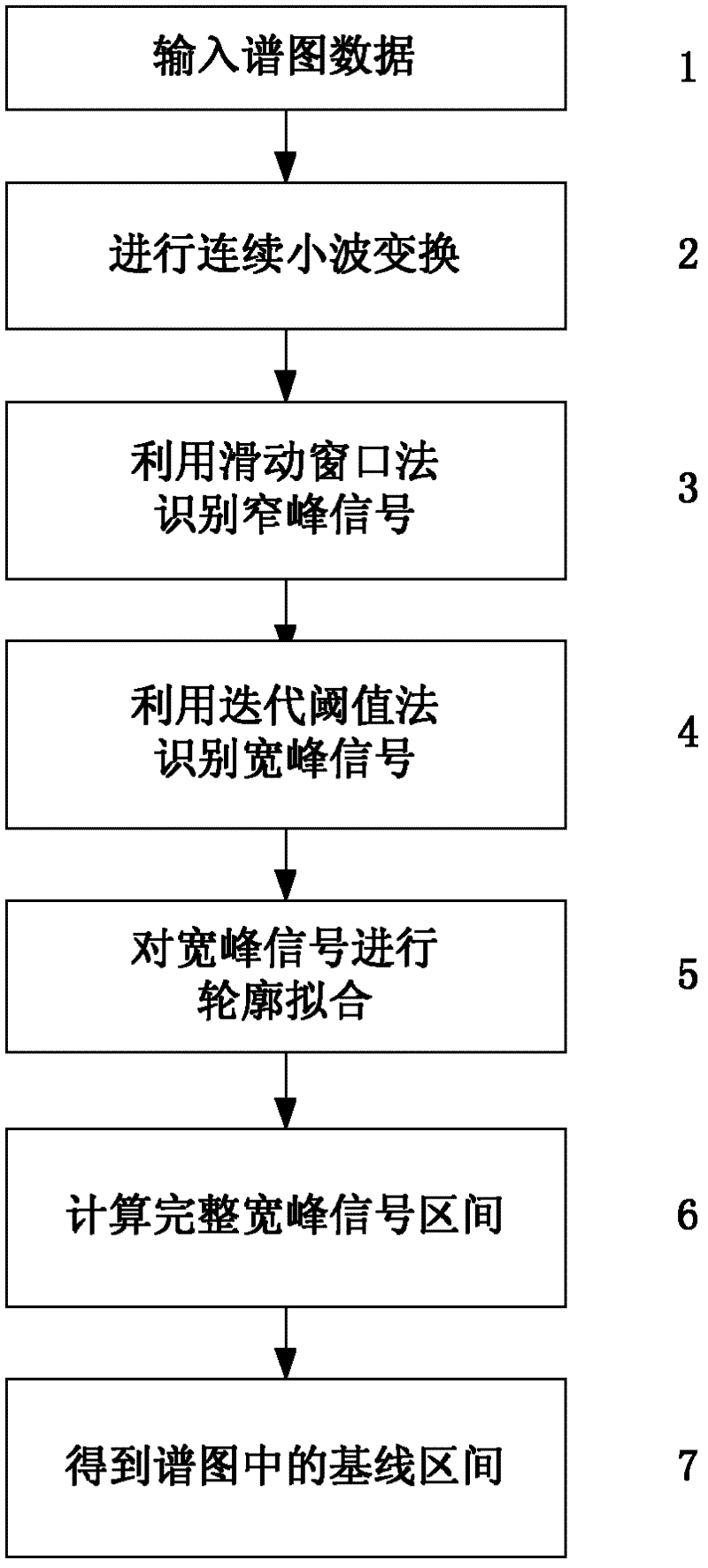Automatic baseline correction method
A baseline correction and automatic technology, applied in the field of spectrogram analysis, can solve problems such as not satisfying the function shape, not being able to adapt to baseline distortion, and spectral peak signal distortion
- Summary
- Abstract
- Description
- Claims
- Application Information
AI Technical Summary
Problems solved by technology
Method used
Image
Examples
Embodiment 1
[0054] Such as figure 1 , figure 2 As shown, an automatic baseline correction method includes the following steps:
[0055] Step 1 (input spectrogram data 1), use Fourier transform and phase correction to process the collected raw data to obtain spectrogram data;
[0056] Step 2 (Perform continuous wavelet transform 2), use continuous wavelet transform to calculate the spectrogram data to obtain the numerical derivative of the spectrogram;
[0057] Step 3 (Using the sliding window to identify the narrow peak signal 3), using the sliding window method and the numerical derivative of the spectrum to identify the narrow peak signal in the spectrum to obtain the narrow peak signal interval;
[0058] Step 4 (Using the iterative threshold method to identify broad-peak signals 4), using the iterative threshold method to identify the broad-peak signals in the spectrum data, and obtain a part of the broad-peak signal interval;
[0059] Step 5 (contour fitting 5 for the broad-peak signal), acc...
PUM
 Login to View More
Login to View More Abstract
Description
Claims
Application Information
 Login to View More
Login to View More - Generate Ideas
- Intellectual Property
- Life Sciences
- Materials
- Tech Scout
- Unparalleled Data Quality
- Higher Quality Content
- 60% Fewer Hallucinations
Browse by: Latest US Patents, China's latest patents, Technical Efficacy Thesaurus, Application Domain, Technology Topic, Popular Technical Reports.
© 2025 PatSnap. All rights reserved.Legal|Privacy policy|Modern Slavery Act Transparency Statement|Sitemap|About US| Contact US: help@patsnap.com



